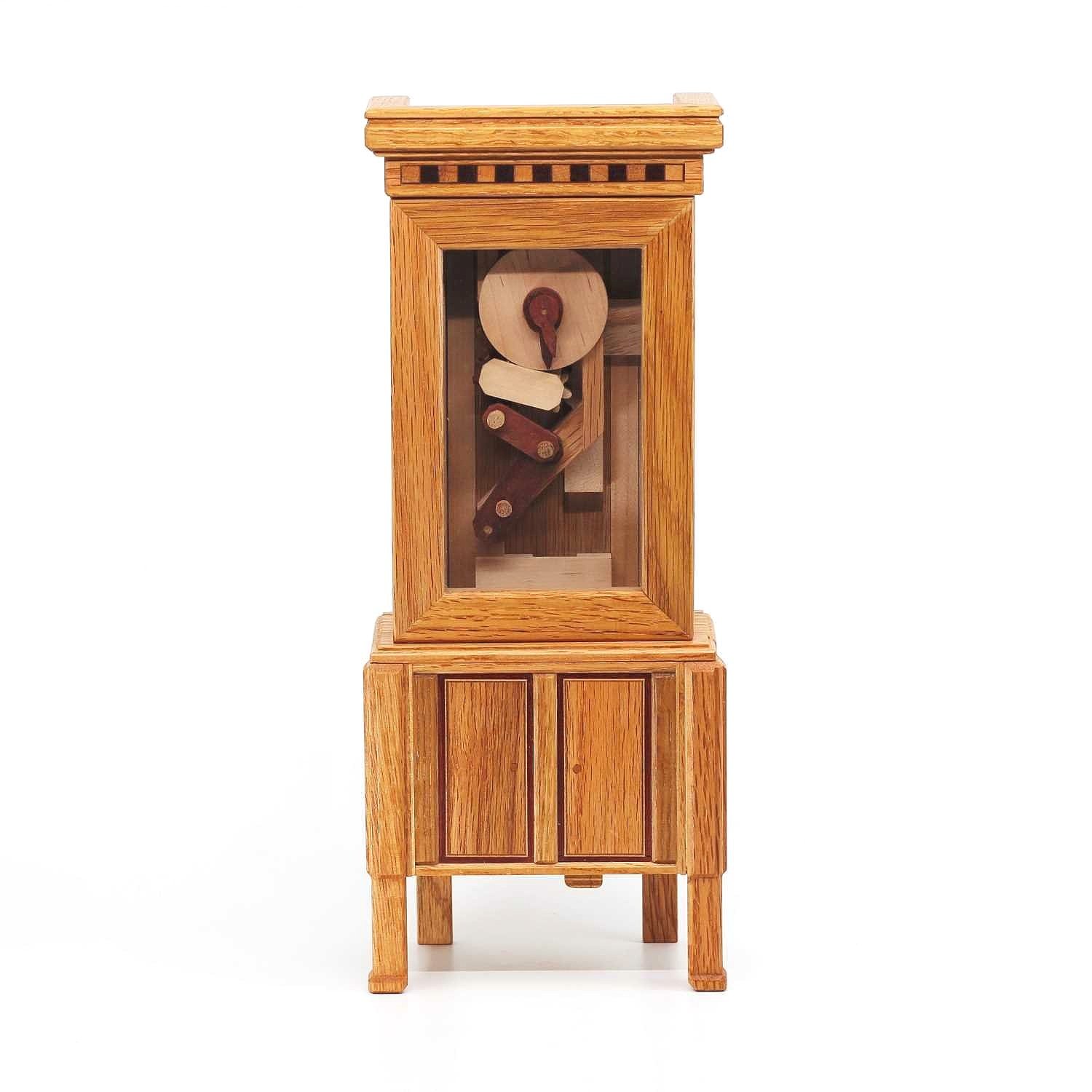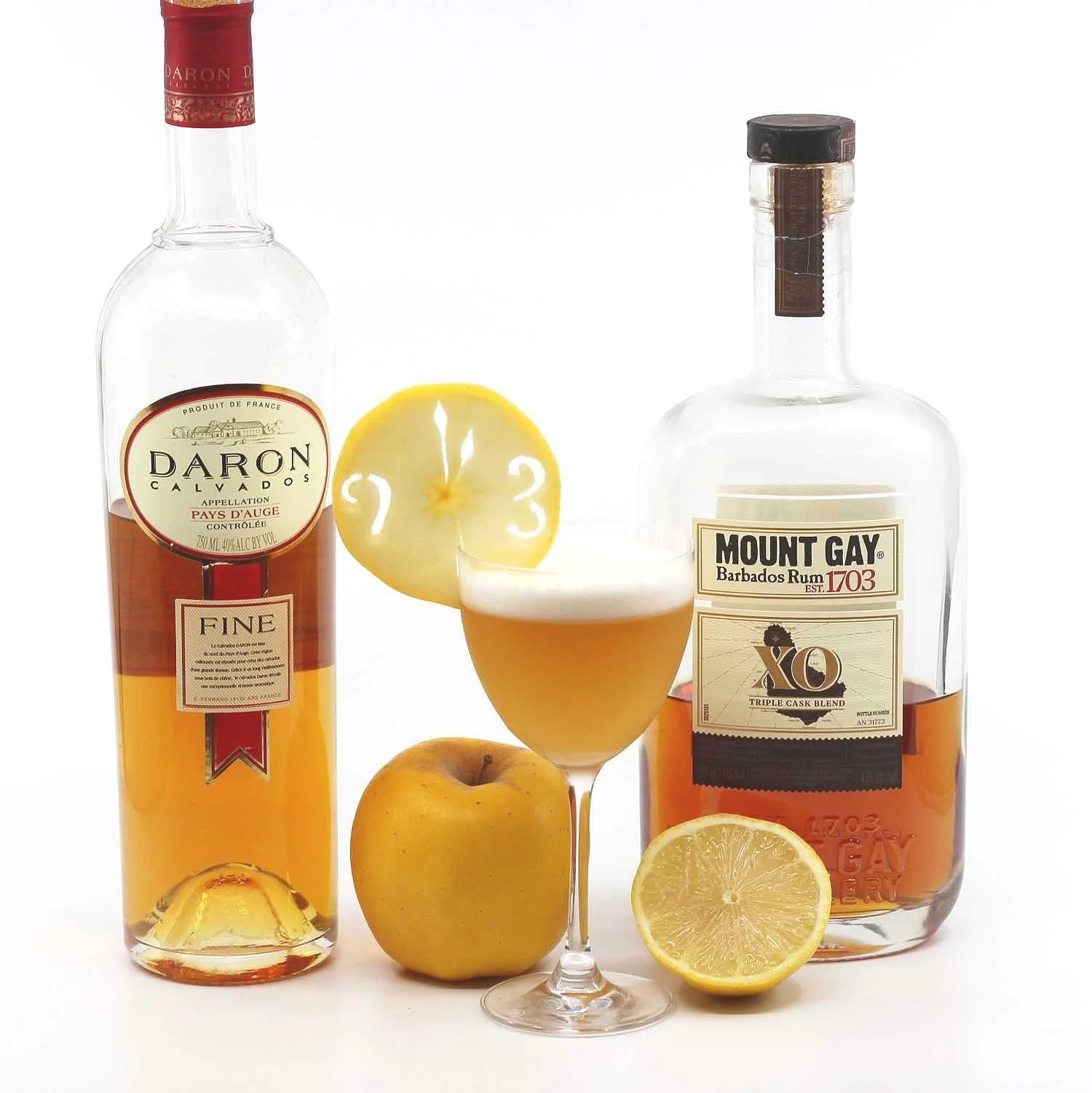It’s About Time
Grandfather Clock
It’s that time of year again, when we all get to reminisce about a year gone by, and contemplate what’s next on the horizon, if we are lucky and fortunate to still be here. I’m taking a few days off here in my corner of the world, so will give myself a break and also spare you all from the usual pedantic lessons in some obscure historical facts I typically make you suffer through, dear readers. No, it’s about time we take a deep breath, thank our lucky stars, appreciate the ones we love, and more, the ones who love us, for unknown reasons. I’ll be raising my glass to all of you as well, thanks for joining me each week.
Stickman Grandfather Clock puzzle box by Robert Yarger
Let’s mark the occasion on this New Year’s Eve with a timely puzzle box that took some time to acquire, and more time to talk about. The truth is I’ve been saving this one for over a year, just for today. These things take time. Fortunately, I have help this time from a favorite correspondent, friend and generous contributor to the blog who knows more about this creation than anyone. The Stickman No 6 Puzzlebox, aka The Grandfather Clock, is an impressively puzzling piece of art that Robert Yarger produced early in his career as a puzzle maker. Back then he made practically everything with his trusty radial arm saw, a highly dangerous and frightening piece of equipment that he coaxed beautiful creations from like a wood whisperer. The clock featured many firsts for Rob, including gears made with a novel new technique, inlay using the classic Japanese yosegi process, and use of glass in the design. Rob shared some memories about the project:
behind the times
“Let's see. So long ago. The white oak for it was stock I picked up on side of a road, the same wood source I used for most of the early puzzles. It was selected because it best concealed the locations where parts of the exterior slide. The glass was from window panes I kept when we moved into my current home and had the windows replaced. I am horrible at cutting glass and got one usable piece for every 3 I cut. All parts were made with just the radial arm saw, which is still the best equipment to cut wooden feet. I also had a hand drill.
Attached is a picture of a left over gear column I recently found while looking for something else. Gears for the project were made by gluing squares of contrasting woods cross grained together to form a square plank, and then little by little sliding it past the sawblade at changing angles until one long gear shaft meshed well with another, so I could tell I had it right, and then cutting sections of these gears off from the shaft. I recall some issues with getting the inner holes, (done with a hand drill) centered.
top of the hour
The concept was a puzzle clock that required logical deduction to get both hands to midnight and unlock its compartment. Unintended was for it to also turn into a dexterity puzzle, which some of them more than others seemed to require. The mechanism would engage and disengage using a hollowed wooden dowel cut at a 45 degree angle, that would lift or drop one gear meshing with another. But there was a thin line between lifting the gear enough, and having it suddenly drop back into place.”
having a wonderful time
The clock is indeed a beautiful piece of artwork, crafted from white oak and featuring maple and bloodwood accents. Hidden sliders provide a way to move the clock hands and a few secrets allow the final goal to be achieved. The solution … takes time. Like many Stickman boxes, the complex mechanisms and mechanical movements are part of the experience and what make them such timeless treasures. Rob recalls, “A copy of this puzzle was given as a retirement gift to Jerry Slocum at IPP in DC. It is traditional to receive a gold watch when retiring, but there were no gold watch puzzles at the time, and one of these was the next best thing.” I think it is safe to say that for Jerry, this might have been an even better way to mark this time honored tradition.
The Finest Sour by Benjamin Sullivan
Let’s raise a glass to this finest hour with something delicious, a spiced baked apple soaked lemon sour that is as good as it sounds. The cocktail was created by North Carolina farm to table chef Benjamin Sullivan for his Charlotte restaurant The Stanley. Time and circumstance have since seen the closing of the restaurant earlier this year, but the cocktail lives on.
cocktail hour
If you’ve got some extra champagne lying about, and who knows, you just might on this particular day of the year, I’d advise you to top up your finest sour cocktail with some and make it even more indulgent. I’d also advise you to say “finest sour” as one word quickly, to fulfill the spirit of this spirited toast. Here’s to another year gone by. I wish you all the best in health and happiness. Cheers!
Time to enjoy this pair
The Finest Sour by Benjamin Sullivan
¾ oz Calvados
½ oz aged rum
1 oz apple cider reduction
½ lemon
egg white
Shake ingredients together with ice and strain into a favorite glass. Garnish with star anise or dehydrated apple slice.
*apple cider reduction: cook down cider by half volume to make a more concentrated syrup








